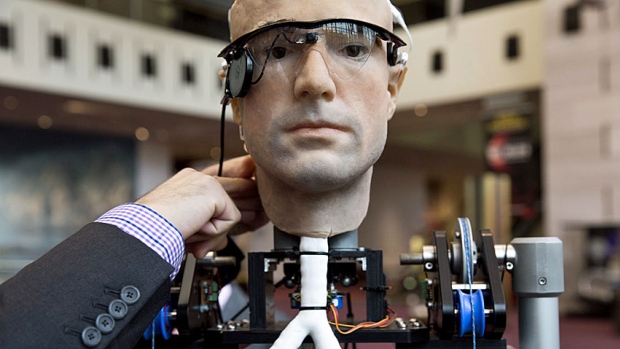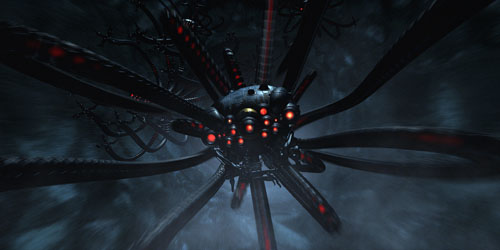
Tag: Tech
Great Eyes, Lidless.

By way of Follow Me Here, Gizmodo looks at five massive telescopes that will change the game, including the James Webb Space Telescope, a.k.a. Hubble 2.0. “Since blowing past its initial budget and launch data, NASA promises the ambitious project is on-track for 2018. And it better, because astronomers are eagerly awaiting its data.”
Rdng is Fndmtl.



Whoa…I’ve read about kung-fu. An intriguing new app aims to turn everyone into speed readers. “Spritz is about to go public with Samsung’s new line of wearable technology.”
Fools and Their Money.


Making the rounds today: Cornell professor Emin Gün Sirer gives his take on Bitcoin and what happened with Mt. Gox, the world’s largest Bitcoin exchange, where over $400 million recently disappeared. “Human history is full of people who were entrusted with valuables, who then absconded with them…Chances are that this is a simple case of theft, involving at least one insider.”
Also note the conclusion: “If one must pick a cryptocurrency, the lowly dogecoin, of all things, is doing everything right. It’s based on economic principles that provide the right incentives for a healthy economy. The community does not take itself seriously. Most importantly, no one pretends that Doge is an investment vehicle, a slayer of Wall Street, or the next Segway. No one would be stupid enough to store their life savings in Dogecoins. And people freely share the shiba goodness by tipping others with Doge. So, young people who are excited about cryptocurrencies and want to get involved: Dogecoin is where the action is at. Much community. So wow.”

Step Aside, Human.

A Prelude to WALL-E: In The Atlantic, Derek Thompson looks at the coming robotic takeover of the job market, whereby 47% of jobs could soon be automated. I for one welcome our new robot overlords — all the more reason why we need to start rethinking a social contract founded primarily on having full-time, two-income employment. We’re entering a new phase of human existence — we’d best start preparing for it. (Bionic man image via here.)
River of Song.

Make it Better Do It Faster.

(Our work is never over.) In more promising future-tech news, scientists figure out a way to store quantum data for much longer than ever before. “Though surviving for 39 minutes may not sound like very long, it only requires one-hundred-thousandth of a second to perform an operation on a single qubit. So theoretically, over 20 million operations could be performed before the qubits’ data decayed by 1 percent.”
Skynet, Year One.

Er, right, but aren’t we forgetting something here? And don’t you people ever go to the movies? Scientists are apparently working toward drones that can make their own autonomous decisions about targets. “Though they do not yet exist, and are not possible with current technology, LARs are the subject of fierce debate in academia, the military and policy circles. Still, many treat their development as inevitability.”
Meanwhile, over on the other side of the world:
“Scientists at Korea’s Advanced Institute of Science and Technology (KAIST) have come up with one solution to the jellyfish problem: build robots to kill them. For the last three years, the team has been working to create robots that can travel the ocean, seeking out swarms of jellyfish using a camera and GPS. Once the jellyfish are located, the robots set about shredding the jellies with an underwater propeller.”
INITIATING PROTOCOL SHRED-ORGANBAGS 101101111…Due to a climate-change-fueled ascendance of jellyfish across the world, Korean scientists have unleashed automated robotic sentinels to mitigate the problem. “[T]he video at top is what they’re doing beneath the surface, using a specialized net and propeller. Be warned, it’s graphic. In preliminary tests, the robots could pulverize 2,000 pounds of jellyfish per hour.”
Sigh…this will all end in tears, people. Paging Kent Brockman.
The Wheel of Pain…for Dogs.

Time to raise Berk’s retirement age? By way of the re-designed Quiddity, which has tons of intriguing posts up at the moment, a curious history of dog-powered engines. “The last illustration displays a very unique, but now extinct, dog called the Turnspit…bred in Britain for hundreds of years to help with cooking and is the original ‘working dog.'”
“You’ve Only Made 0 Friends.”

